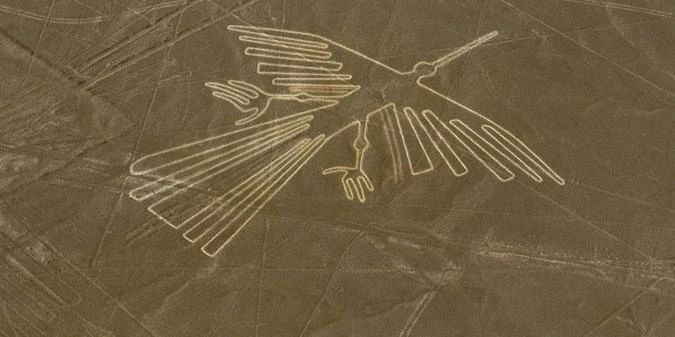一、听力部分
10月28日的考试结束了,雅思听力部分相较于之前的机场考试,难度不是很高,整体题型分布比较均匀,填空题依旧占比较重,所以在准备考试的学生们还是多多关注听力部分的高频考词以及场景词。
Part 1 房间预订:
类型:填空
1.Purpose of events: to celebrate the Choir’s anniversary
2.Approximate number: 80
3.Date: April 9
4.Room is available until :11.30 p,m,
5.The luxury menu
6.Starter: soup or salad
7.Tables in rows
8.Equipment requirements: a microphone
9.Provisional booking of ten twin rooms
10.Free parking is available for bus
Part 2(旧题)No.109 Section 2 tour on an island
11-12) multiple choice
11. How to get there?
A. plane (canceled)
B. Ferry
C. Hovercraft (delayed last week)
12. What should you pay attention to when taking a taxi?
A. uncomfortable
B. un- roadworthy
C. unregistered (registered taxis looks roadworthy; for other unregistered taxis, if accident happens, no insurance can be guaranteed)
13-15) matching
A north
B east
C south
13. Family hotel—A
14. Amusement park—C
15. Natural park—B
16-20) Completion—suggestion
16. Take your own medicine and…
17. Do not drink water from the rivers
18. sign off in mobile phone, it may not work on the island
19.Pay attention to the monkeys, because they bite
20. Remember to try the local seafood
Part 3(原题) 43 V131010 Section 3 Children’s Behavior Management
21-25) Multiple choice questions
21.Why did they choose younger children?
They are going to work with them.
22.What preparation they have done?
Class observation
23.Why use open questions instead of the closed questions?
Open questions are more interesting
24.What should the students do after the research?
Ask the tutor to check
25.What needs the student to do next?
Talk to the college administrator
26-30) Matching
26.Observing – it is hard to arrange
27.Videoing - encourage teachers to teach well
28.Questionnaire: reflect teachers’ true response
29.Reading articles and books: other students also will have done it
30.Web searching: useful skills for future research
Part 4(原题)No.78 2017.10.28/2015.09.03 V11127 Extinct Animals
The problems in Australia
The extinction of birds due to the wind energy
The decreasing of 31. frog because of the increasing housing
Loss of food sources due to the pesticides, e.g: 32. birds
The single crop like 33. corn can also effect the ecosystem
The reasons lead to the extinction
People of conscious of extinct animals can be influenced by the 34. media ( e.g panda) People are less concerned with small animals like 35. insects
Some other reasons:
36. Fear
As our 37. rivals in terms of food
Disgust
The reasons why we should prevent extinction
To improve our knowledge of 38. ecosystem
We need to improve the 39. complex of the ecosystem in order to make it more stable
The animals have other uses
1. having animals as pets Cobwebs can influence the medical effects related to 40. blood clot
二、口语部分
写在前面:本篇主要收录2023年9月的雅思纸笔口语和机考口语题目。
请大家结合题库,本份预测进行构思、准备、演练。
Part 1 2 红色题为必备考题,紫色题为第二重点准备。
*重点按顺序准备题目,一边刷题库,一边整理语料,根据预测来高效准备,尽量考前确保所有预测都按顺序至少刷过一遍(文档结尾附备考建议)
三大题:Work or study/ Hometown/ Accommodation
Part 1 必备考题
Riding a bike/ Fishing/ Films/ Running/ Musical Instruments/ The city you live in/ Map/ Ice cream/ Bags/ Robots/ Tea and Coffee/ Concentration/ Teachers/ Language/ Dream and ambition/ Geography/ Wild animals/ Rain
Gifts/ Helping others/ Fixing things/ Friends/ Favorite days/ Day off/ Health/ Week/ Noise/ Chatting/ Transport/ Clothing
Part 2
必备考题
Describe someone you know who has recently moved to a new place
Describe someone you know who often helps others
Describe a famous person you are interested in
Describe a popular person
Describe a foreign person who speaks Chinese well
Describe a person who likes to cook for others
Describe a new shop that recently opened in your city/town
Describe a place away from your home and you want to visit in the future
Describe the ideal house or apartment you would like to have
Describe a place you have been to where there were lots of people
Describe a car journey that you remember well
Describe a talk/speech you gave to a group of people
Describe a happy experience in your childhood
Describe an occasion when you got incorrect information
Describe an occasion when you spent time with a young child
Describe an occasion when you lost your way
Describe an exciting adventure you would like to take in the future
Describe a book that you have read many times
Describe the game that you played in your childhood
Describe a movie you watched recently that you felt disappointed about
Describe an invention that is useful in your daily life
Describe a piece of clothing you enjoy wearing
Describe a sports program you like to watch
第二重点准备
Describe an interesting person that you that you haven’t met in person but would like to know more about
Describe a person who always has interesting ideas or opinions
Describe a successful businessperson you know (e.g running a family business)
Describe a sportsperson you admire
Describe a park or a garden in your city
Describe a place in your country that you are interested in
Describe a beautiful city
Describe an important decision you have made
Describe an expensive gift that you would like to give someone when you save a lot of money
Describe a party that you enjoyed
Describe an activity that made you feel tired
Describe a bad service you received in a restaurant/shop
Describe an occasion when you waited a long time for a nice thing
Describe a time when you had a problem with using a computer
Describe a difficult task that you completed at work/ study that you felt proud of
Describe a traditional celebration in your country that you enjoy
Describe an interesting job you would like to do
Describe a water sport you would like to try in the future
Describe a period of time that changed your life
Describe a painting you have seen
Describe a photo that makes you feel happy
Describe a science, subject (Biology, Robotics, etc) that you are interested in
Describe a rule that is important in your school or at work
Describe a good advertisement that you think is useful
Describe a piece of good advise that you gave to someone
备考tips:
分享一道本季度难点题目:
Describe a popular person
You should say:
Who this person is
What kind of person he or she is
When you see him/ her normally
And explain why you this person is popular
这道题目一开始拿到,很多同学如果不仔细阅读下面的小问题,可能会想当然的认为,这个题目可以和“famous person”串联在一起,一个受欢迎的人,那不就是我们喜欢的明星名人嘛。但其实,我们仔细体会一下题干,popular就证明是famous的人吗,并且我们需要注意它的第三小问,“When you see him/ her normally ”,那既然是需要见到过的人,最好我们还是选取身边的朋友、老师、同学、亲人等等最为素材。
这一题可以和 Describe someone you know who often helps others乐于帮助别人的人,串联起来,或者Describe a person who always has interesting ideas or opinions想法有趣的人。或者我们也可以从别的角度来思考这个人物受欢迎的原因,和“People”相关的维度包括:hobby/ occupation/ personality/ appearance/ how you know (about)/ age/ life experience/ relationship/ where from (home address/ nationality/ hometown)/ education background/ family background/ social status/ marital status/ social network/ zodiac sign/ wealth/ sexuality/ habit/ language/ health/ popularity/ achievement/ name/ gender/ contact/ outlook etc.比如说有些人受欢迎的原因是性格上的,outgoing,confident,charismatic,generous,kind等等;有些人受欢迎是因为外貌appearance;有些人可能是因为多才多艺,有一技之长受欢迎。
三、写作部分
小作文:柱状图
2009年10月-2019年10月澳大利亚6个城市的水库水位线变化(water level reservoir)
继上次考完地图题后,今天的雅思考试又回归了常规的数据类图表。整体难度不大。大家按照常规的动态图的答题思路去完成即可。按照趋势去分段,增长一段,下降一点,维持稳定的可以摆在一段。要注意不要只说趋势,不说具体的数据,数据需要来支撑给出的特征,并且要注意时态,用过去时态去书写。
大作文:
Some people think that printed books are no longer needed in the digital era, because all writing can be stored electronically. Others think printed books will still play an important role. Discuss both views and give your own opinion.
一些人认为在数字时代,纸质书籍不再被需要了因为所有的文字都可以被电子储存。然而,其他人认为纸质书籍仍旧会扮演着比较重要的作用。讨论双边并且给出自己的看法。
今天考察的是双边讨论的题目,对于双边讨论的题型,大家在主体段需要先分别论述甲乙双方的立场并且在最后可以以自己的观点作为结尾。在思考双方观点的时候,可以代入经历去写。甲方可能是生活在一些发达地区的人,电子设备对于他们来说是司空见惯的事物,他们发现在平板和电脑上,可以获得各种各样的他们需要的信息,因此觉得纸质书籍没有必要了。对于乙方来说,他们仍旧看到了纸质书籍的必要性。他们可能是生活在一些网络不发达的地区或者是一些贫困地区的人,对于他们来说获取电子设备来获取信息并不是一件容易的事情,因此仍旧觉得纸质书籍是非常必要的。最后给出自己的想法即可。
四、阅读部分
今天雅思阅读部分的passage3极其抽象,直接陷入疯狂。最近的几场雅思阅读都出现了passage3极难的情况,甚至难度秒杀剑桥真题,所以想要拿高分的同学需要在p3上多下功夫了。
Passage1 Nazca Lines纳斯卡线条/秘鲁怪图

曾出现于:2015.08.13/2018.02.24/2020.07.18
类别:历史
难度:★
题型配比:7判断+6填空
参考答案:
1-7为判断
1.TRUE
2.NG
3.NG
4.FALSE
5.FALSE
6.TRUE
7.TRUE
8-13为填空待回忆
分析:今天的p1为旧题,也曾多次出现在考场中,主要介绍了出现在南美洲秘鲁的巨大图画,与剑16T2P1英国的White Horse也属于一种“geoglyph”。标准判断填空搭配,但是判断在先,填空在后,建议先做填空。
参考文章(非原文):
Nasca Lines
The lines are drawn in geometric patterns and distinct animal shapes.
As a plane soars over the high desert of southern Peru, the dull pale sameness of the rocks and sand organize and change form. Distinct white lines gradually evolve from tan and rust-red. Strips of white crisscross a desert so dry that it rains less than an inch every year. The landscape changes as lines take shape to form simple geometric designs: trapezoids, straight lines, rectangles, triangles, and swirls. Some of the swirls and zigzags start to form more distinct shapes: a hummingbird, a spider, a monkey.
These are the renowned Nasca lines—subject of mystery for over 80 years. How were they formed? What purpose could they have served? Were aliens involved?
The lines are found in a region of Peru just over 200 miles southeast of Lima, near the modern town of Nasca. In total, there are over 800 straight lines, 300 geometric figures and 70 animal and plant designs, also called biomorphs. Some of the straight lines run up to 30 miles, while the biomorphs range from 50 to 1200 feet in length (as large as the Empire State Building).
THE LINES REVEALED
Peruvian archaeologist Toribio Mejia Xesspe was the first to systematically study the lines in 1926. However, since the lines are virtually impossible to identify from ground level, they were only first brought to public awareness with the advent of flight—by pilots flying commercial planes over Peru in the 1930s. American professor Paul Kosok investigated and found himself at the foot of a line on June 22, 1941—just one day after the winter solstice. At the end of a full day studying the lines, Kosok looked up from his work to catch the sunset in direct alignment with the line. Kosok called the 310 square mile stretch of high desert “the largest astronomy book in the world”.
Kosok was followed by the German Maria Reiche, who became known as the Lady of the Lines. Reiche studied the lines for 40 years and fought unyieldingly for her theories on the lines’ astronomical and calendrical purpose (she received a National Geographic grant in 1974 for her work). Reiche battled single-handedly to protect the site; she even lived in a small house near the desert so she could personally protect the lines from reckless visitors.
WHAT ARE THE LINES?
The lines are known as geoglyphs – drawings on the ground made by removing rocks and earth to create a “negative” image. The rocks which cover the desert have oxidized and weathered to a deep rust color, and when the top 12-15 inches of rock is removed, a light-colored, high contrasting sand is exposed. Because there’s so little rain, wind and erosion, the exposed designs have stayed largely intact for 500 to 2000 years.
Scientists believe that the majority of lines were made by the Nasca people, who flourished from around A.D. 1 to 700.
Certain areas of the pampa look like a well-used chalk board, with lines overlapping other lines, and designs cut through with straight lines of both ancient and more modern origin.
THE THEORIES
The Kosok-Reiche astronomy theories held true until the 1970s when a group of American researchers arrived in Peru to study the glyphs. This new wave of research started to poke holes in the archeo-astronomy view of the lines (not to mention the radical theories in the ‘60s relating to aliens and ancient astronauts).
Johan Reinhard, a National Geographic Explorer-in-Residence, brought a multidisciplinary approach to the analysis of the lines: “Look at the large ecological system, what’s around Nasca, where were the Nasca people located.” In a region that receives only about 20 minutes of rain per year, water was clearly an important factor.
"It seems likely that most of the lines did not point at anything on the geographical or celestial horizon, but rather led to places where rituals were performed to obtain water and fertility of crops," wrote Reinhard in his book The Nasca Lines: A New Perspective on their Origin and Meanings.
Anthony Aveni, a former National Geographic grantee, agrees, "Our discoveries clearly showed that the straight lines and trapezoids are related to water … but not used to find water, but rather used in connection with rituals."
"The trapezoids are big wide spaces where people can come in and out," says Aveni. "The rituals were likely involved with the ancient need to propitiate or pay a debt to the gods…probably to plead for water."
Reinhard points out that spiral designs and themes have also been found at other ancient Peruvian sites. Animal symbolism is common throughout the Andes and are found in the biomorphs drawn upon the Nasca plain: spiders are believed to be a sign of rain, hummingbirds are associated with fertility, and monkeys are found in the Amazon—an area with an abundance of water.
"No single evaluation proves a theory about the lines, but the combination of archeology, ethnohistory, and anthropology builds a solid case," says Reinhard. Add new technological research to the mix, and there’s no doubt that the world’s understanding of the Nasca lines will continue to evolve.
Passage 2: 未来科技投资趋势

曾出现于:新
类别: 科技
难度:★★
题型配比:List of headings7+填空4+多选2
分析:据目前回忆来看,p2应为新题,主要介绍了对于科技的一些发明投资。List of headings是今年特别活跃的一个题型,与去年相比考频和题型占比都有极大的提高。今年比较少见的多选也出现在了p2,但其实heading和多选的组合在剑桥真题中还是较为常见的,比如剑16T1P2Step Pyramid of Djoser一文的题型组合与今天的p2如出一辙。
Passage 3:Speech Act and Philosophy言行与哲学

曾出现于:2016.08.27/2017.09.16/2021.06.05
类别:哲学
难度:★★★
题型配比:单选6+句首配句尾3+判断5
参考答案:
27-32为单选
27.C 28.B 29.B 30.A 31.D 32.D
33-35为单选
33.F 34.A 35.D
36-40为判断
36.YES
37.NG
38.NO
39.NO
40.YES
分析:本文主旨讲解了语言行为和哲学的关系,还涉及到了语言的应用、语法、句子判断和表达等。之前的考情分析中提到过passage3中出现句首配句尾的几率是比较高的,且难度也是很大的,再加上选择题考了顶格的6题,文章也比较抽象,导致很多考生第三篇做得晕头转向。